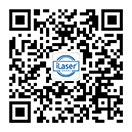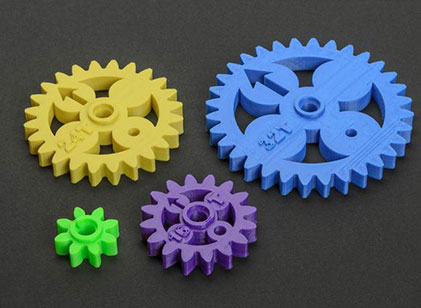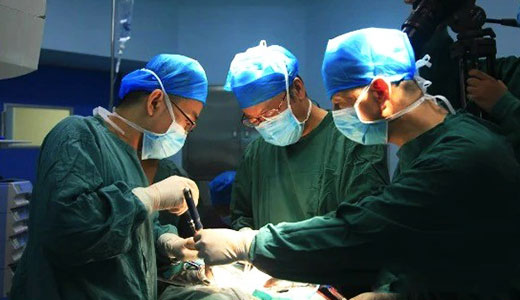In April 2023, the Soviet Navy team of Northwestern Polytechnical University published a paper entitled "3D printed biphasic calcium of Enhanced mechanical properties and biological responses of SLA".The phosphate bioceramics by doping bioactive metal elements "research paper was published in Journal of the European Ceramic Society (43) 2023.4167-4178。
Recently, the Soviet Navy of Northwestern Polytechnical University and others published the top issue of ceramic additive manufacturing, reporting that rare earth oxide (Y2O3) in-situ reaction regulates the opening rate and high temperature creep resistance of photocuring 3D printing alumina-based ceramic cores, combined with reasonable sintering temperature selection, to prepare alumina-based ceramic cores with high porosity, appropriate bending strength and excellent high temperature creep resistance.The in-situ reaction between rare earth oxide (Y2O3) and alumina matrix during sintering, especially the distribution of Y element between alumina phase and reaction product YAG, was studied, and the effect of element segregation on the high temperature creep resistance of ceramic core was clarified.By optimizing Y2O3 content and sintering temperature, the contradiction between high porosity and high temperature creep properties was broken through, and the law of Y2O3 content and sintering temperature to adjust the performance of ceramic core was established.The alumina-based ceramic core with high porosity (40. 8%), appropriate strength (16. 1 MPa) and low temperature deflection (0. 63 mm) obtained by the above method provides an important reference for improving the comprehensive performance of the alumina-based ceramic core for 3D printing by UV curing.Related work has been published under the title Insitu Y3Al5O12 enhances comprehensive properties of aluminabased ceramic cores by vat photopolymer ization 3D"Printing" research paper published in Additive Manufacturing.



CeraBuilder160Pro, a 3D printer for iLaser Ceramics
The preparation and application of precision ceramic components with high performance and complex structure is an important way to restrict the leap-forward development of high-end equipment in key industries such as aerospace, fine chemicals and advanced manufacturing in China.In the process of investment casting, the ceramic core is an important part of the mold, which ensures the shape and dimensional accuracy of the casting together with the mold shell.Ceramic cores used for hollow blades of aero-turbine engines are required to have fine structure, complex shape, high porosity and good mechanical properties at room and high temperatures.It represents the peak level of ceramic core material preparation technology and is a typical component of precision ceramics in the field of aerospace.For the rapid development of aviation industry and the improvement of national defense equipment, it is of great significance to prepare high performance and complex structure precision ceramic core materials.In recent years, 3D printing technology has attracted much attention because of its advantages such as no mold, high efficiency and flexible manufacturing.At present, the 3D printing technology of ceramic materials mainly includes photocuring 3D printing technology, direct ink writing, selective laser melting, selective laser sintering and so on.Among them, the photocuring ceramic 3D printing technology of Intailai laser has the advantages of high precision and good surface quality, which provides a new idea for the preparation of hollow blades with complex structures.
At present, silica ceramic core and alumina ceramic core are mainly used in investment casting process of hollow blade inner cavity with complex structure.Compared with silica ceramic core, alumina ceramic core has the advantages of high melting point, good chemical stability, no phase change in use and high positioning accuracy.In order to meet the development needs of aero-engine turbine blades, they are the key materials for the new generation of high-performance ceramic cores.However, alumina has good acid and alkali resistance, which makes it difficult to release alumina ceramic cores.Increasing the porosity of ceramic core is an effective way to improve the dissolution.However, high porosity can easily lead to large creep deformation of ceramic cores at high temperature, which reduces the high temperature creep performance of ceramic cores, thus reducing the yield of turbine blades.Therefore, how to improve the comprehensive performance of 3D printing ceramic core is the key problem to be solved under the condition of high porosity.
Preparation process and sintered ceramic cores

Fig. 1: (a) Ceramic slurry preparation; (B) Biscuit printing; (C) Debinding and sintering process; (d) 3D printing of ceramic core; (e) Schematic diagram of ceramic core performance test
The alumina-based ceramic cores with complex structure and good surface quality were prepared by 3D printing technology, and the ceramic slurries with different Y2O3 contents were prepared by ball milling process.We successfully printed the original shape of the ceramic core through the 3D printing technology of light-cured ceramics.After degreasing and sintering, the 3D printed alumina-based ceramic cores were prepared, and the shrinkage, porosity, bending strength and high temperature deflection of the ceramics were measured.These results are of great significance for further optimization and improvement of ceramic printing process.
Microstructure characteristics of ceramic cores
 '
'
Figure 2: Laminated structure of 3D printed alumina ceramic core by photocuring: (a)- (e) microstructure of ceramic core sintered at 1550 ° C with different content of yttria; (A1)- (E1) microstructure of ceramic core sintered at 1600 ° C with different content of yttria;(A2)- (E2) Microstructure of ceramic cores sintered at 1650 ° C with different amounts of yttria

Fig. 3: (a) Microstructure of the 3D printed alumina-based ceramic core with 4 wt.% addition after sintering at 1600 ° C; (B) is a partial enlargement of (a)
The 3D printed alumina-based ceramic cores show obvious layered structure characteristics, and the layer gap decreases gradually with the increase of fine powder content.Through the design of graded powder, the microstructure of ceramic core contains a large number of connected pores, which greatly improves the porosity.At the same time, there is an obvious sintering neck between the coarse powder and the fine powder, and the coarse powder is in the early stage of sintering, which can reduce the sintering shrinkage of the ceramic core.
Grain boundary segregation of element

Fig. 4 (a), (d), (e) and (f) are EDS maps of YAG and Al2O3 sintered grains, respectively; (B) and (C) are electron diffraction patterns of YAG and Al2O3; (G) element scanning direction; (H) element distribution in scanning direction
This study further confirms that rare earth oxide (Y2O3) reacts with Al2O3 to form YAG phase during sintering in TEM.The results of element distribution show that there is an obvious enrichment of Y element at the interface between the two phases.This plays an important role in improving the high temperature creep resistance of the material.
孔隙率与高温挠度

Figure 5: Effect of sintering temperature and Y2O3 content on the open porosity of 3D printed alumina-based ceramic cores by photocuring

Figure 6: Effect of sintering temperature and Y2O3 content on the high temperature deflection of alumina-based ceramic cores for photocuring 3D printing
In addition, the open porosity and high temperature deflection results of 3D printed alumina-based ceramic cores by UV curing confirm that the addition of Y2O3 can significantly adjust the contradiction between high porosity and high temperature creep resistance.This discovery realizes the synergistic improvement of porosity and high temperature creep resistance.In this process, the addition of Y2O3 plays a key role.
Conclusion and prospect
In summary, it is the first time in this study to control the comprehensive properties of 3D printed alumina-based ceramic cores by in-situ generation of YAG phase with rare earth oxides.It is firstly proved that the rare earth oxide-Y2O3 will completely react with alumina to form YAG phase during the sintering process.The microstructure shows that increasing the content of Y2O3 can significantly reduce the size of the interlayer gap, and the graded powder design makes a large number of through holes formed in the 3D printed ceramic core.In addition, it is found that the powders with different particle sizes are in different sintering stages.The contradiction between the porosity and the high-temperature creep resistance is successfully solved by the YAG phase generated by the in-situ reaction, so that the synergistic improvement of the porosity and the high-temperature creep resistance of the photocuring 3D printing ceramic core is realized.After optimization, the porosity of the alumina-based ceramic core reaches 40. 8%, the deflection at high temperature is reduced to 0. 63 mm, and the bending strength reaches 16. 1 MPa.This study provides a new way to improve the comprehensive mechanical properties of 3D printed ceramic cores.In addition, the method also provides a new improved way for the application of the ceramic material.
About Interlais Laser:
We focus on the development of ceramic laser 3D printing technology.
Founded in 2016, Intailai Laser is a national high-tech enterprise, headquartered in Wujiang Development Zone, Suzhou, with three R & D and manufacturing bases in Suzhou, Wuhan and Shenzhen, and a service network throughout the country.
The core team has been working in the additive manufacturing industry for more than ten years. Through self-developed ceramic laser 3D printing equipment and materials, it can break the monopoly of foreign ceramic additive manufacturing equipment, reduce the cost of use, and meet the high-end manufacturing needs of aerospace, medical, electronics, scientific research and other fields.
Intailai Laser provides users with a complete set of solutions for advanced ceramic 3D printing, covering advanced ceramic 3D printing services, printing equipment, printing materials, process design and development, application development, etc. Ceramic 3D printing equipment and services provided by Intailai Laser have been adopted by many domestic research institutes and enterprise users to help customers develop new applications.Promote the transformation of customer ceramic R & D and production to digital direction.A relatively complete ecological chain of advanced ceramic 3D printing industry has been constructed.





